10 Inch Sliding Miter Saw Head to Head
10 Inch Sliding Miter Saw Head to Head
For this installment of our ever popular “Head to Head” series we took a look at a wide ranging selection of 10 inch Sliding Miter Saws on the market. If this is your first time reading one of our Head to Heads, trust that our crew poured over each saw to give you a comprehensive look at these tools. And furthermore, we provide our readers with insights you can only expect from seasoned pros, arming you with all the information you need before investing in a miter saw.
Whether you are a homeowner seeking the safety and accuracy of a miter saw. A woodworker looking to upgrade their shop saw. Or a professional contractor investing in a new miter saw for speed and accuracy. This tool sees a lot of cuts, so you want to make sure you find the right 10 inch sliding Miter Saw that meets your needs at a price you can afford.
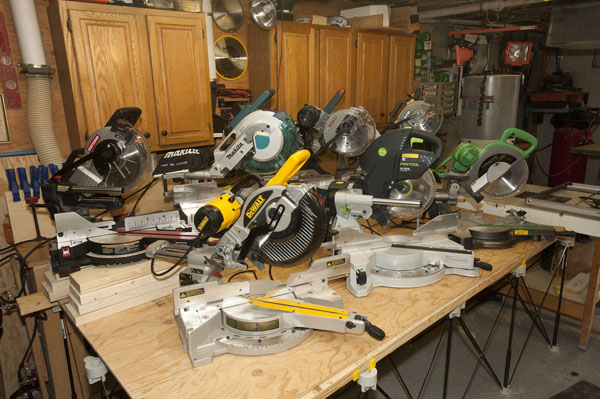
In this Head to Head we not only deep dive into the individual features and specifications of these saws, but we also put them to the test in some common performance tests you’d want to consider as a owner and operator of this tool. At the end of this article we also have a detailed video talking about this head to head and the results. But before we go into detail regarding the tests, lets take a look at the saws we evaluated [linked to manufacturers websites below]:
Dust Collection
First we conducted a dust collection test. From carpenters working in finished spaces, to shop workers who want to reduce the amount of airborne dust in their environment, knowing how well a saw will integrate with a vacuum is an important measure of performance for any user. [see our dust collection results here]
Mobility
Next we weighed each saw, and carried the saws up stairs, through doors ways, transported one handed to open doors or gates, and loaded/unloaded the saw into a work vehicle. Depending on the primary application of your miter saw needs, transportation is a major part of the day to day considerations you’ll want to take into account before committing to a new saw. [see our mobility results here]
Power
Finally we conducted a speed test to quantify the power each saw displayed on a challenging piece of engineered lumber. This is a simple test with some uncontrolled variables, but our methods were fair. We had the same operator conduct each cut, with the instruction to let the saw do the cutting, apply as much pressure as the saw and blade would allow. We timed 5 cuts per saw and took the average. [see our power and speed results here]
Value
As always we name a best value saw as well, primarily focused on a tool that delivers professional quality features at a homeowner or DIY price. [see our best value results here]
Editor’s Picks
With results from the above tests, plus the features, capabilities, physical characteristics, weight and price of each model we here at TBB can confidently point you to the saw that meets your needs with any budget in mind. So let’s take a look at each saw and get an idea of what you’ll get and what you’ll pay for it. And of course, as difficult as it can be sometimes, our editors name their favorite overall saw, in three categories; Best Job-site Saw, Best Shop Saw, and Most Innovative Saw [see our editors overall best picks here]
Bosch CM10GD
The Bosch CM10GD stands out for it’s Axial-Glide™ System which compared to traditional “rail” slide systems reduces the footprint of the saw and saves space. This feature is especially important for those of you trying to conserve precious space in your shop. And most likely this saw will be dedicated to a shop versus out in the field, as it weighs in at a whopping 63 lbs, almost 10 lbs heavier than the next saw in our test.
The Bosch CM10GD may be heavy, but features innovative up front controls with easy and accurate adjustments, a crystal clear blade guard, and a two piece fence system cast with a scale for reference, all focused on accuracy and repetition. The saw holds its own in our power test, but lacks to shine in the dust collection evaluation. Also, the axial glide mechanism is much stiffer torsionally, resulting in more precision especially when making compound miters. This is a pretty big deal when you compare it to traditional rail slides. Overall the Bosch CM10GD is all about accuracy, so if you are tight on space, and precision is key this is the saw for you.
To read our in depth review of this saw check out Todd Fratzel’s Bosch CM10GD review here on Tool Box Buzz. This saw comes with a $599 sticker price, which is a bit high compared to the rest of the field. But, if precision is your primary focus, this saw may be pricey compared to other professional job-site saws, it is still only HALF the price of the Festool’s Kapex Miter saw, making it a great option for fine finish work or cabinet making.
Craftsman SM2509RC
The Craftsman SM2509RC shines as more than just a DIY tool, it is packed with high end features that a homeowner will love and delivers the performance us professionals here at TBB demand. If you are looking for an affordable shop saw and need to save space the SM2509RC has a 39% smaller footprint compared to traditional sliding designs according to Craftsman. For a beginner woodworker, cost and shop space are usually major concerns, and this saw saves both money and space!
This Craftsman miter saw delivers many top of the line features, like it’s innovative rail design, adjustable laser guide, and a 60 tooth factory blade for clean cuts right out of the box. The SM2509RC features a telescoping extension table on both sides, can miter to 50-degrees, and has a powerful 15-amp motor. This saw is perfect for a serious DIYer or a homeowner with a fixer-upper for a great price at just under $300, check out our detailed Craftsman SM2509RC review here.
As you’ve already read the SM2509RC brought more to the table than just a good price. The saw performed exceptionally well in our dust collection test with an oversized dust port that reduced build up on the table/fence and collected the 2nd most amount of debris in our evaluation. The Craftsman also held its own in our power test, while still being lightweight and easy to transport. This an overall great choice for serious DIYers on a budget.
DEWALT DW717
The DEWALT DW717 is a heavy duty saw that will sure to be a workhorse for you and your crew. DEWALT miter saws are jobsite legends, ask any carpenter if they’ve used a DEWALT on a job and you’ll be hard pressed to hear a “no”, unless you’re talking to a guy on his first day. Regardless the DW717 doesn’t disappoint with a no frills, highly capable saw, that delivers power and accuracy. To read an in-depth run down of this saw check out Ethan’s DEWALT DW717 review here on TBB.
The DW717 is built for professionals, all heavy duty construction, with serious capacity, and performance you’d expect from a contractor grade tool. The DEWALT DW717 features a simple detent mechanism for bevel cuts, just as easily as you can lock into the detent you can bypass them, which makes setting and resetting accurate bevels a breeze. Additionally, DEWALT offers this saw with the LED blade shadow light option to mark the blade in ANY lighting situation. this feature, unlike a laser, never has to be calibrated since it casts a shadow on the blade mounted to the saw. Works on any blade thickness!
The saw we tested came out of the box with the need for some fine tuning, but the saw is designed to adjust as needed, and tuning was simple enough. The variations noted were minor but noticeable enough to the user to make the correction upon inspection or a few cuts into a project. Overall the DEWALT DW717 exhibited good dust collection, solid power, and although is a heavier model, is convenient to carry. At $469 this saw is priced just right and for the money you are getting a dependable, powerful, and professional grade tool.
Festool “Kapex” KS 120 EB
The Festool “Kapex” KS 120 EB has quite the reputation among carpenters and woodworkers as the premier saw in the industry. When you think precision, consistency, and speed you think Festool’s Kapex miter saw, unfortunately the next thing you think is; “how am I going to afford that?” This saw was designed to be integrated with dust collection and ensures surgically precise cuts, two features in high demand by finish carpenters and their fussy clients. So if you are working in high end markets, where perfection is the only standard, a saw like this, at the sticker price of $1,400 may be well worth it for you.
Besides the cost Festool’s “Kapex” KS 120 EB is loaded with innovative features that you can only get with Festool. From the simplicity of a cord wrap or highlighting adjustment features in their signature light neon green, to a super effective dust collection system that collected 24% more debris than the next competitor. Festool also delivers one of a kind features like a dual laser that marks both edges of the kerf of the blade and a “special cutting position” that allows the user to flip a lever that shifts the position of the saw to use the back portion more effectively, resulting in cut capacity that reaches 6-5/8″ crown molding and depths of 4-3/4″ on 3/4″ stock. Also a feature of the Bosch CM10GD.
Bottom line this saw is packed with unique features, one of a kind capabilities, and is guaranteed to deliver quality results. But as the old saying goes, “you get what you pay for”, and this miter saw is not cheap. This tool is probably most suited for a shop environment or a secure large finish carpentry jobsite, either way this Festool “Kapex” KS 120 EB miter saw is an investment. To learn more about the saw check out our detailed Festool KS120EB review by Rob Robillard on TBB.
Hitachi C10FSHPS
Hitachi’s C10FSHPS 10″ Inch Miter saw is another usual suspect on the jobsite. Known for it’s light weight, large cutting capacity, and the dependability you expect from a professional grade brand, this saw is a carpenter’s workhorse. No frills, no surprises, just a heavy duty saw that is simple to use and delivers exceptional accuracy day in and day out. I’m a huge fan of the 10″ Hitachi and although there aren’t many unique or innovative features to boast about this saw is still a great choice for contractors and serious DIYers alike.
The C10FSHPS stands out with it’s ambidextrous handle, easy to engage safety trigger, and simple controls. This is the type of saw that you can put on a jobsite and won’t get a single question from the crew on adjustment or operation. This is a straightforward, hardworking miter saw that will not disappoint. The C10FSHPS is fairly bare bones, but includes a few really nice features like a soft electronic start, laser marker, and professional quality dust collection. All well worth the price of $499, especially for a tool you know will last for years.
The Hitachi C10FSHPS performed well during our dust collection test, noted for the least amount of dust build up on the table and fence, which can throw off the accuracy of your cuts if not tended to. The saw delivered contractor grade power during our speed test, and transports easily as one of our lighter models, with well thought out handles to make transportation to and from the jobsite as painless as possible. If you want to learn more about this contractor grade saw, check out one of our newest team members’ Hitachi C10FSHPS review on TBB.
Makita LS1016L
The Makita LS1016L was a crew favorite during our test, and caught everyone’s eye with it’s innovative dual rail forward facing slide mechanism that reduces the saws footprint and delivered smooth operation. Additionally, the miter and bevel detents were fast, accurate, and the miter range on the saw swings 60-degrees both left and right making this an extremely capable saw. Overall the Makita LS1016L really shined in this test and priced at $497 this saw epitomizes “bang for your buck”.
The LS1016L showcases some unique features and innovative design elements that make this saw really memorable. But this saw doesn’t rely on it’s sexy design, the performance of this saw was as notable as it’s look. The Makita LS1016L showcased its power in our speed test winning handily. And despite the saws weight about 54 lbs, it collapses nicely for transportation, so during our mobility test we noted its weight but because it was so well balanced and compact it made for a relatively easy carry.
This saw stood out to our crew for it’s ease of use, power, and accuracy. There were so many positives about this tool combined with it’s innovative design and overall sleek look no one on our crew mentioned it’s poor dust collection performance. Ranking side by side with the Bosch CM10GD at the bottom of the field, you may want to consider how important dust control is for you before you pull the trigger on this saw. Overall not a deal breaker for most, but if you want to learn more check out Phil’s review on TBB coming soon.
RYOBI TSS102L
RYOBI’s TSS102L is definitely geared toward the homeowner or DIYer. Although the saw does have some high end features, solid cut capacity with the slide and above average dust collection, it has limited use for professional contractors. Still, priced super competitively at about $200 it is the most affordable saw featured in our test and therefore is worth considering if you are looking to buy your first saw or want to upgrade to a more capable DIY saw.
Where the TSS102L falls short for pros is in its miter and bevel range and overall performance. With the ability to only bevel in one direction, a fixed fence, and max miters of 45-degrees in both directions this saw just doesn’t have the flexibility to be effective on a professional jobsite. Additionally, the saw performed poorly in our speed test, showing it’s limited capability up against engineered lumber. Again this saw is designed with the homeowner in mind, the slide provides the basic cut capacity, the bevel allows for compound cuts, and the laser enhances speed and accuracy, overall these are nice features for a DIY tool, but doesn’t have the depth for the pro contractor.
The TSS102L is really light weight, has the basic requirements for a contractor grade tools, and is extremely affordable. But ultimately the RYOBI TSS102L is geared for a homeowner looking to purchase a capable saw at a great price.
Dust Collection
For many users, whether you are a remodeler, woodworker, or DIYer dust control is the key to keeping your clients happy and you and your families air quality healthy. As an apprentice I spent many hours sweeping and vacuuming our work spaces to control dust and keep our client’s living spaces dust free. Now a days with a quality jobsite vac and tools designed for dust collection to be integrated the amount of dust you can collect at the source is really reducing ambient dust and keeping our workspaces cleaner than ever. So naturally we wanted to see how well these miter saws would perform when used with a HEPA vac.
We made 25 cuts on a 2×6 piece of KD lumber and measured the volume of wood dust that was collected by the vacuum. Additionally we assessed the build up of dust that didn’t make it into the vac, but accumulated on the table and fence of the tool. The result of that assessment are depicted on the graph below:
Winner Dust Collection: Festool “Kapex” KS 120 EB
Festool is very diligent about designing their tools considering a “whole system” concept, so naturally the kapex was designed to integrate seamlessly with a vacuum for dust collection. And the results clearly show it, the Kapex collected almost 25% more dust than the next saw in the test. Bottom-line, if dust control is a must for you on the job or in the shop the Festool KS 120 EB is the saw for you.
Mobility
In today’s market, contractors are often moving from job to job to keep their projects moving and keep their crews busy. This makes the weight and mobility of a saw an important factor when considering investing in a new miter saw. I’ve heard many a story of guys buying a new saw to replace a functioning saw or leaving a saw to collect dust in their garage because they just got sick of moving their monster saw to and from jobs.
The Weight of each saw is captured in the graph below.
Winner Mobility: Hitachi C10FSHPS
We named Hitachi as the winner of our Mobility assessment for two reasons, first and foremost the saw is the lightest of the contractor grade saws and it’s no frills design and heavy duty construction make it well equipped to get banged up in the back of a truck and stand up to job-site abuses. The footprint of the saw is somewhat larger than other saws with more advanced slide mechanisms but the C10FSHPS compacts nicely for transportation and our crew found it really easy to carry with the convenient top handle.
Power
To get an idea of which saw out of the box had the most power we conducted a simple speed test. Using the factory blade, we had a single operator make five cuts on a super hard and super dense engineered lumber product and averaged the times. We used a ~2×8 LVL and instructed our operator to apply as much pressure during the cut as the saw appeared to be able to handle, or in simpler terms, “let the saw do the cutting”.
The results were all relatively close, with a majority of the field falling in the same time frames, and only a few saws standing out. In particular we noted the Festool KS 120 EB had one of the slower times, but we’ve experienced this before with Festool products, they are light and focused on fine finish work and utilize advanced motor controls, so they often don’t shine when it comes to the brute force needed to handle today’s engineered framing material. Overall results are depicted in the graph below:
Winner Power and Speed: Makita LS1016L
The Makita LS1016L delivered some serious power standing out from the crowd with an unmatched time trial of 20 seconds [the shortest bar on the graph]. This saw is all about speed from the miter and bevel settings to the fast efficient cutting when the blade meets the lumber. This saw is definitely geared towards contractors who are all about saving time and money. From quick transportation from truck to job-site, to adjustments, to cutting, this saw is all about speed.

Value
When it comes to value we consider first and foremost performance then use features and overall design to discriminate between a good price and a good value. With that said our crew was really impressed with the Craftsman SM2509RC for it’s unique space saving design and “all in one” integrated telescoping table and stops for repetitive cutting. This saw also performed exceptionally well in our tests showing flexible mobility, pro quality power, and pro quality dust collection.
Value Winner: Craftsman SM2509RC
At $299 this is a great value for homeowners and DIYers alike, this may even be a decent starter saw for a entry level professional. The only concern we would have making this recommendation would be the longevity of the saw in a professional environment where tools are abused daily and get moved to and from job-sites regularly where they are susceptible to damage. But if you don’t foresee your saw going through this type of abuse this saw is a great deal! You can see the price comparison depicted in the graph below:
Editor’s Picks
Phil Benevides – Best Job-site Saw
“A multifaceted job-site saw needs to be mobile, accurate, and powerful. I can be framing one day, chopping PT stock and engineered lumber, and at the end of the week find myself making precision cuts on a trim job. Not only do I need a saw that can handle both those extremes but also be mobile enough to move from site to site.”
“The Makita LS1016L delivers the power needed for tough cuts and keeps framing jobs moving, the convenient bevel and miter adjustments make compound miters quick and easy to dial in, and the compact footprint and moderate weight makes transporting this tool more than manageable.”
Todd Fratzel – Best Shop Saw
“Wood workers have so many options when it comes to buying a miter saw for the shop. The Bosch CM10GD is an exceptional saw that’s powerful, accurate, and extremely innovative in design. Upfront controls make adjustments easier and safer than more traditional saws that locate some of the controls at the rear of the saw.”
“The CM10GD is heavy which I believe suites it well in the shop as it dampens vibration. The patented Glide mechanism offers far greater stability and torsional strength than any of the rail designs we tested. For me, the Bosch CM10GD is the perfect shop saw when you consider price, options, and overall performance.”
Rob Robbilard – Most Innovative Saw
“In my line of work precision cuts matter. This is an incredibly well designed saw and ahead of its time when compared to other miter saws. The Kapex is the most advanced sliding compound miter saw we tested. In the hands of a finish carpenter, this saw is an engineering masterpiece, chock full of innovation!”
“Compact, lightweight, kick ass dust extraction, precision cutting, easy adjustments, micro-adjustable bevel angle dual lasers and quality components are some of the features that should make this saw the number one choice of professional tradesmen.”
Miter Saw Head to Head Summary Video
Watch as Rob sums up our Miter Saw Head to Head battle with his summary video:
About the author
22 Comments
Leave a comment
Disclosure
Product reviews on this site contain our opinion of a product or service. We will always strive for objectivity and transparency in our reviews. Our goal is to provide readers with honest, objective information based on our own experiences. We never have and never will accept payment in exchange for a positive review. Many of the products that we review are provided to us for free by a manufacturer or retailer. In some cases, we also have advertising or affiliate relationships with manufacturers and retailers of products and services we review. For additional information please visit our additional disclosure policies.













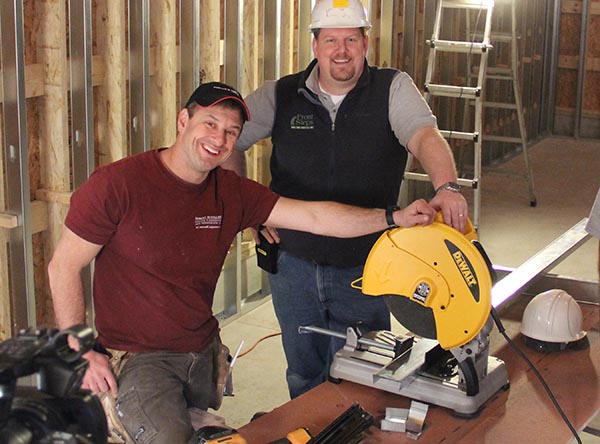
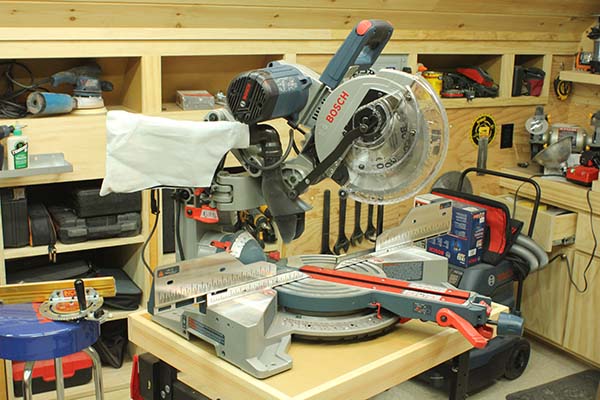
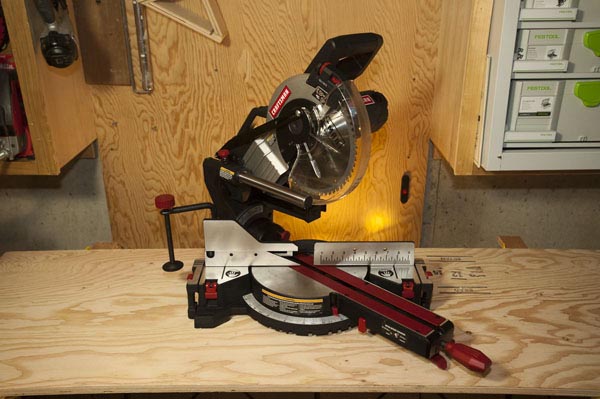
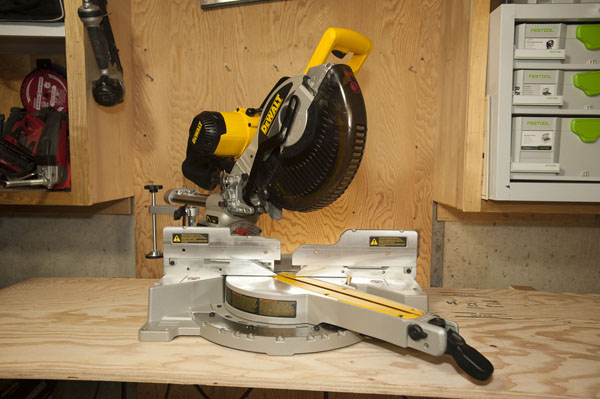

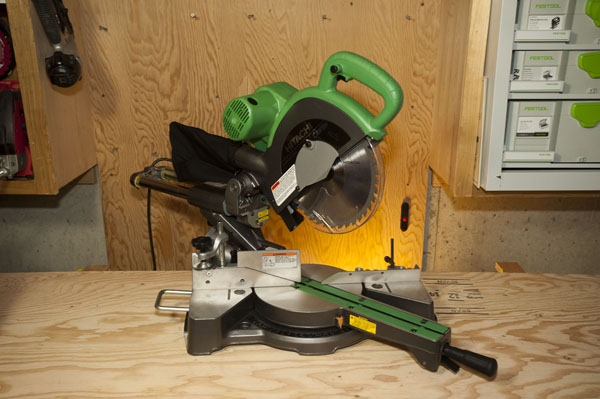
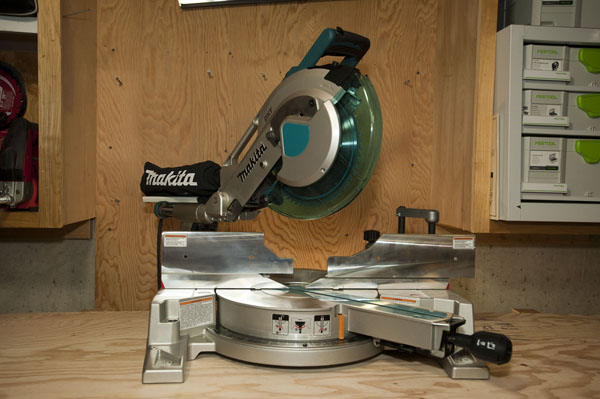
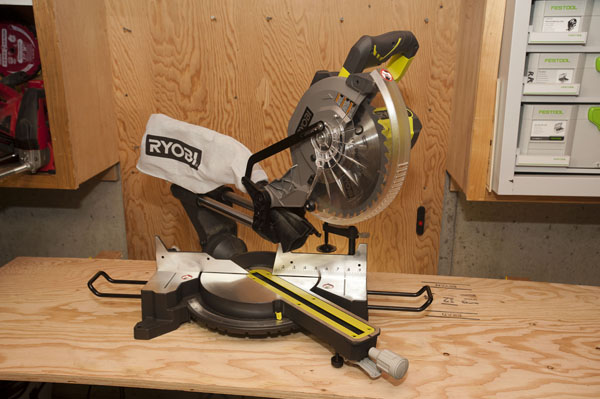

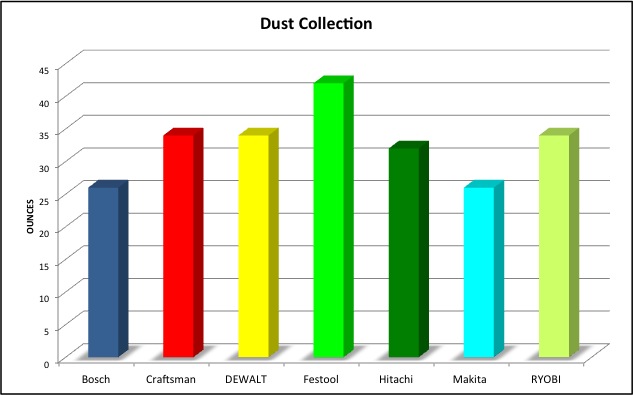
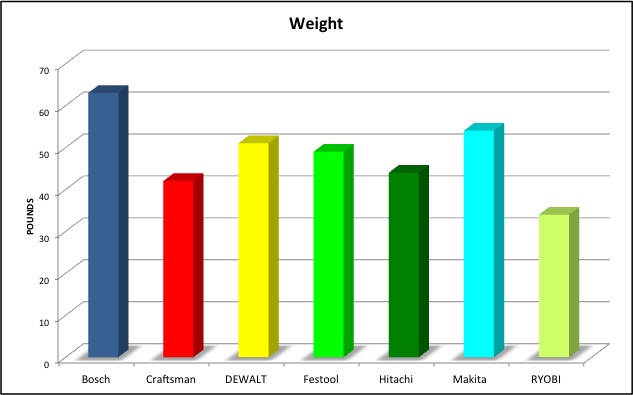
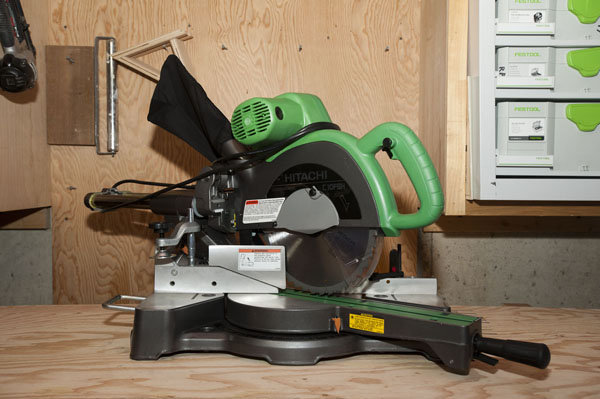
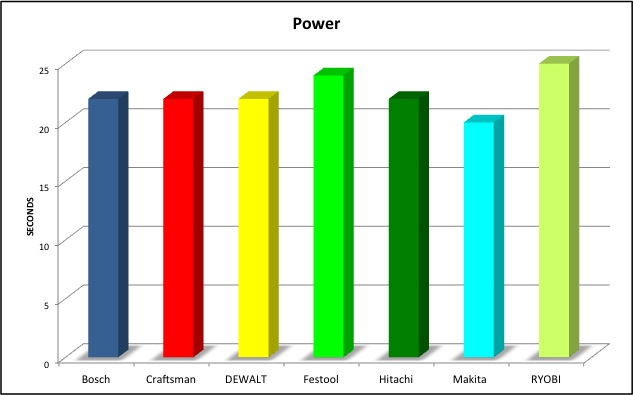
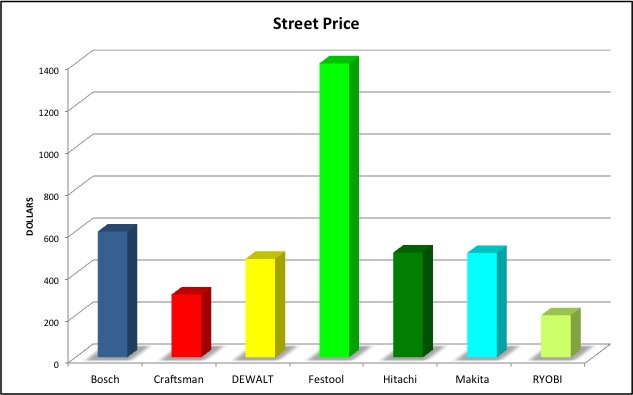

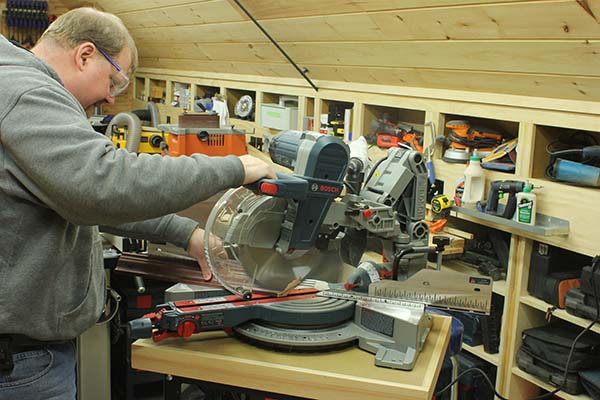
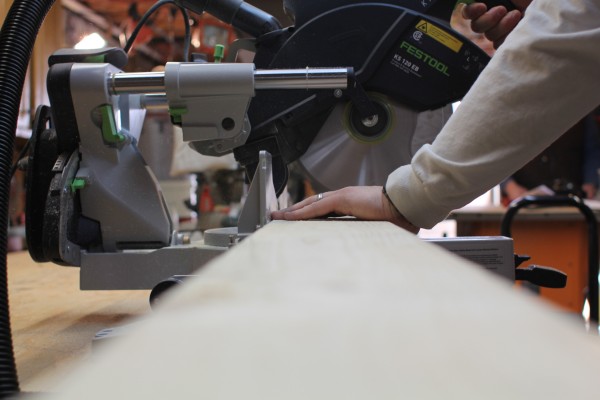












[…] know the guys at ToolBoxBuzz have been hard at work on this 10” Sliding Miter Saw compareo with 7 of the most popular brands. […]
Good to see this, although I’m surprised to NOT see the Rigid saw. I’d like to raise three concerns:
Power test: Your power test is valid only in the “as purchased configuration”, which means using the stock blade. A proper power test would have used identical new aftermarket blades in order to eliminate a variable based on a consumable.
Accuracy: What the heck? No ranking for accuracy?
User Friendliness: How much of a pain is it to change the blade? Nifty power cord like Festool, or troublesome fixed cord that is a pain to replace when some tool (i.e. fool on a jobsite) drops a dozer blade on it? Ease of dialing in the bevels. Etc. Think of all the little usage things that have annoyed you about sliders in the past, and then evaluate these saws against those considerations.
BikerDad – Couple things. The Ridgid wasn’t included because they didn’t want to enter the mix. Their 10″ sliding compound saw is actually built by another company that licenses the Brand for their saw.
We agree with the power comparison, however, when we’ve tried to compare saws in the past using identical blades it makes the comparison even harder. No doubt the blade is probably the biggest factor. What we were striving for his is the best out of box comparison we could achieve.
We could do an entire week of testing on accuracy and likely not do it justice. We did look at the accuracy out of the box (noted in the article) of how well the saw was set up at the factory for squareness. With this many saws we do our best to give an overview comparison.
I think if you read carefully you’ll see that we pointed out these type of issues. For example, the Bosch has a big leg up on the competition with it’s upfront bevel controls.
Really appreciate the feedback, certainly all very valid points that we’ll consider for the next comparison. The more we dive into these comparisons the more we quickly realize that unless we have a staff of 20, and weeks of time, we can’t possibly do a full blown research project. Thanks for sharing!
Hi Todd, what company builds the Ridgid saw? I am trying to source one here in Australia and trying to work out if it has been rebranded something different again on our shelves
Typically the saws are sourced from TTI. The saw that was mentioned in this article I’m not sure who the manufacturer is. Wish I could be of more assistance. Good luck.
I concur. As a professional carpenter, the very first thing I look for is accuracy. I need consistent 45’s and 90’s, the second is power, then crosscut length maximums, then price. What good is a saw if accuracy isnt prioritized.
I have owned dewalt makita hitachi saws over the last thirty years, I due custom kitchens for a living and purchased a festool kapex 6 months ago.I wish i had bought it 5 years ago when it came out.Yeah it is a lot of money ,but i am a better craftsmen when using it. so much cleaner then my dewalt or makita and the cut is outstanding. Durability ? I have not owned it long enough yet,but if it is like my festool drills then I will be more then satisfied. I have a five year old t drill and the batteries are as good as new, dewalt panasonic bosch, lasted 3 years at best.
I think that another catagory should be the quality and precision of the slide mechenism. The amount of slop, the smoothness,or extreem lack of smoothness in several brands, is a very important element in the overall quality of a SCMS. Vertical cut capacity is also an important, unadressed catagory.
John – All valid things to consider. While not a specific category, we took into account the slide mechanisms in our overall evaluation. The Bosch leads that category followed by Festool. The vertical cut capacity was very similar on all models, the basic limiting factor is the blade size. Thanks for the feedback!
I have had a lot of sliding saws over the 23 years I have been using them. I just purchased the Kapex the first of Feb , I would not put those other 10′ saws in the same room as the Kapex. The engineering involved in making that saw is unprecedented in everyway .
The Bosch CM10GD is describe as a poor dust collection system.
In your video we see the Bosch CM10GD making two cuts.
The second cut, with the classic and never efficient bag on any miter saw I know.
Result, a lot of dust flying around.
The first cut, with some dust collection hooked to the saw.
A lot more efficient.
As for all other cuts on the six other saw, there is always a dust collector connected to them
Hello,
I was wondering if you have tested the newer Canadian Tire Maximum dual bevel saw either the 10″ or 12″Please see link below. I have tried the older models but I wasn’t a big fan of the accuracy.
http://www.canadiantire.ca/en/pdp/maximum-dual-bevel-sliding-mitre-saw-12-in-0556768p.html
Thank you
We have not….haven’t seen it here in the US.
Excellent overall review. As an owner of three of these saws (Bosch, DeWalt, and Festool) I can say quite confidently the Festool is the best. The lasers (which up until this saw I always viewed as a gimmick) on both sides of the blade are remarkably accurate once calibrated. Dust collection with their CT 36 (amazing in itself) is by far the best of the lot, and makes remodels much less stressful on homeowners. It can be placed tight up against a wall, which is another big deal to remodelers who often have to work in spaces not ideally suited.
The one thing I would love to see included in the review was the overall mobility of the rigs. Back in the day (I am starting to get some gray hairs!) I loved the DeWalt the most simply because it was the only one I could get with a stand at all. Now something like a “gravity rise” stand with the saw permanently mounted is the standard. With that being said, this is where the Kapex REALLY shines. The saw itself is only 47 pounds, and the stand is 46. The Bosch saw is 64 pounds, while the stand is a whopping 77 pounds. It is also (with base) like 52″ wide, while the Kapex is only 36″.
I am 37 years old now, so the sheer mobility of the Kapex alone is worth it. As I primarily do remodeling, the dust collection is just as important. No more “zip wall” systems need to be set up around the cut station. Features such as variable speed just further the argument for the Kapex. The only thing I really miss is being able to cut 6″ base standing up as I do on the DeWalt 12″, but the compound cuts/laser/zero blade deflection combination is so accurate on the Kapex that I just lay it down with no worries at all. The rip fence was always machined poorly on the DeWalt anyhow, so even if you could cut the base standing up it wouldn’t matter because since the entire fence wasn’t at 90 degrees with the table (unadjustable) the cut wouldn’t be straight, as the entire piece is leaning back slightly.
The cost of the Kapex and the stand ($888?!?! what?!) is prohibitive for most, but once you bite the bullet you will never go back. Sooner or later every one of us grow from being just a carpenter to a true craftsman and the Kapex is the only saw I have EVER used that gives me the confidence to lay wide ass crown on the flat and it’s going to be perfect. $10/ft wide Clear Maple crown doesn’t afford a carpenter the flexibility to screw up or just slather caulk on the joint like you can get away with on paint grade stuff. If you’re serious about your craft, get the Kapex. Period.
Thanks Ben…..great feedback.
I looked up the MAXIMUM 12′ saw referenced by the earlier poster as available from Canadian Tire and was intrigued. A further review showed a pdf. instruction manual almost identical to that of the Craftsman saw reviewed in this article. It seems that MAXIMUM also makes a 10″ version which is just like the 10″ reviewed here but with enhanced features; front mounted bevel release, power switch lockout, etc. Who makes these saws (and the Craftsman) and are they available here in the USA under another name. I am thinking of trying to purchase one out of Canada if the exchange rate is favorable.
As a remodeling contractor, I do quite a variety of unusual cuts which most construction workers don’t have to deal with on a regular basis. Customers can request some strange assemblages, which require innovative and precise cutting.
I’ve been in the business for over fifty years and to this day, I cannot justify paying exorbitant prices such as Festool’s cost.
I’ve used their equipment on several occasions and I agree they are the premier in most lines yet with a little effort and time, almost any tool shown can be brought into the accuracy level required for exact miters and matches.
I currently own three miter saws: two DeWalts (10 and 12 slide) and an old Hitachi 8″ slide. My 10″ is the workhorse for general construction and my 12″ slide is my goto for trim. I use the Hitachi for flooring as it accurate enough and large enough for just about any flooring I may do. I spent about thirty minutes tweaking the 12″ to get exact replication on cuts and as with most cuts, movement is the bane. I try to plan my cuts so I do not have to keep flipping the saw back and forth. A little slow at first but with practice, it becomes second nature. And still not worth throwing a thousand dollars at a saw to avoid what I would consider the mandatory checks for operation.
I myself am a content owner of the Kapex. Yes, it cost a fortune. But it was the first and will be the last saw I buy. Hence, with extensions for sawing long stock& all, the saw actually cost me 20 BigMac Co a year over a 15 year span. And I figure I’d rather cook & eat cheaper & healthier and have the Kapex.
This said, I have the highest respect for the other products as well. They all have their flaws, even the Kapex, and it’s personal what you choose to put up with. I only wish every buyer of every saw satisfaction.
I’m wanting to fix up and have a little workshop, so my space is limited, I’
m planning on making a dedicated Miter saw area, I would love some advice trying to make the area have as small of a footprint as possible I am very much drawn to the Delta 26-2250 12 in. Dual Bevel Sliding Cruzer Miter Saw, but there seems to be something not so great about it, you folks did want to post in the Video, or I could be wrong but it seemed like you wanted to expand on so flaw it had..
I like the idea of having the ability to have a large cross cutting for the short term.. Because I have a 20 year old Ryobi Table saw, that’s gutless and I’m honestly wanting to get cabinet table saw in the future.. When I was younger I did Carpentry Work framing so I have a had experience using different equipment way back when on different sites 20 years ago.. I have an old Chop saw, it used to have a useless laser. So I’ve no clue about all those type of bells and whistles. I honestly think I will be just as comfortable using the blade to line up cuts like I have always done then needing any lazer. So the fact the Delta did not have one was nothing big, and I also am going to figure out my lighting over this area when I build what will hopefully be a great dust collection area. Though a light could be still a nice aspect…
There will be times I would like to use this for larger wood, but I honestly wanting the smoothest action, the most accurate miter saw. I have had my neck fused twice, so the very little force needed aspect of the Bosch also sounds amazing to me. Because of that injury anytype of extending motion can be harder and sometimes more painful. So is the Bosch CM10GD the most accurate at cuts? is it good with delicate woods, trimes?
Which miter saw is the best at delicate cuts, smoothest action, and has the best end results for moldings, trims, etc…
If you took the time to read this Thank you so much, and if you can any help here I would be so thankful…
Todd Dyer
Todd – Check out my shop here: https://www.homeconstructionimprovement.com/workshop/
I think it will give you some ideas and also you can see how my Bosch Glide is set up and how it reduces the space needed compared to some of the miter saws with rails.
This test is only if you want to saw with precision with a miter saw. (test is not for rough work).
Tips and Test:
Very important if you would like to saw with precision. (avoid torsion as much as possible)!
Always choose a Miter saw with a handle positioned in a vertical line above the saw blade.
Everything must be aligned, slide rails, handle, and saw blade,it is much better this way the blade will not tilt.
Because there is some torsion in the aluminum housing .
And choose an engine with softstart on it to prevent wear of the gear and worm shaft.
It is very important that everything is aligned.
Here are some examples to show how the handle must be positioned above the blade.
Bosch gcm 800 sj / Bosch gcm 8 sjl / Evolution rage 3 / FESTOOL KS 60 / HITACHI C12RSH2 / FESTOOL KS 60 E KAPEX / Metabo KGSV 72 Xact / Bosch GCM 8 SDE
(This also is the case with the Miter saw without the slide rails).
If you want you can test it yourself at home if there is torsion in the aluminum housing.
Step-1. First you make a clean sharp saw cut from +-5 mm deep in to a nice flat piece of wood about +- 20 mm thick. To this with the normal handle positioned on the right side of the Miter saw.
Step-2. Then repeat this by pushing the saw blade down with your hand (finger) on the aluminum protective cover were the saw blade is cased in. Just now only do this without the running engine.
Step-3. Now you can see if the saw blade will be positioned in or next to the saw cut. If the saw blade is (+- 0,2 / 0,5 mm) next to the saw cut then there is torsion in the aluminum housing.
Step-4. Therefor it is much better to choose a Miter saw with the handle positioned vertical in line above the saw blade.
The second option is the handle positioned horizontal in line above the saw blade.
Step-5. When you measure the vertical angle square (Digital level box) of you’re sawblade don’t forget that there is always some torsion in the aluminum housing.
Conclusion: how further away the handle is from the saw blade how more chance of torsion in the aluminum housing.(don’t go for that).
Also with a cheap slide miter saw it is still better the handgriff a above the saw blade than on the right side. Maybe they will make it someday then we have a winner…
I noticed that none of the editors chose the Dewalt as the best overall saw. During your review, it didn’t seem like there was much that you didn’t like about the Dewalt. Are there any big or small reasons why you didn’t pick it over the others?